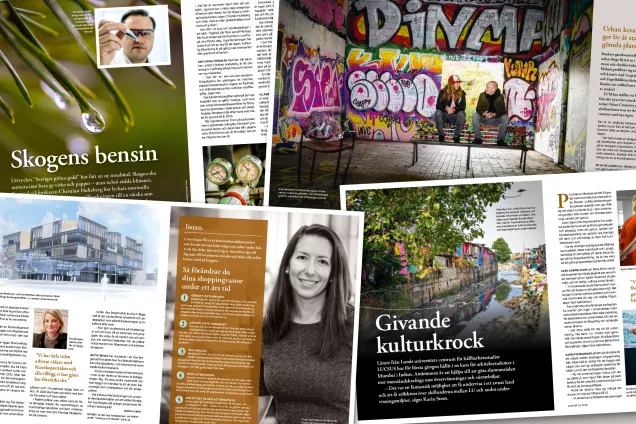The contracted course led to new insights about teaching and practical knowledge about e-learning, something that Veronika Tarnovskaya previously had just begun to explore. For example, she received much more direct feedback on her teaching. It allows you to follow exactly when students find it hard to keep up and start asking questions, or switch off and take a break. She is now reusing a lot of the material produced for the course – on a Master’s level course in digital marketing.
“The students are advanced. They live their lives online, and it is therefore absurd to offer them a digital marketing course – that is not digital at all”, says Veronika Tarnovskaya.
It started with Atlas Copco ordering a contract education course for one hundred of its communications officers. It was to be an interactive course in digital marketing that included group work, yet entirely online as the communications officers and marketing professionals were working in different countries all over the world. The existing digital platforms, such as Luvit and Live@Lund, were rejected – Atlas Copco demanded a system that was neat and simple with good features. Jessica Hansson at LUCE coordinated the contracted course and is pleased that it also led to good contacts with the management team, which could benefit the University and provide a development opportunity for teaching staff.
“Contract education enables you to free up time for new thinking and producing material, and in this case a digital platform which can then be reused. Contract education is to have a ripple effect and develop LU in many ways”, says Jessica Hansson.
Starting an online course involved a lot of work initially. Veronika Tarnovskaya spent many hours choosing relevant content and creating both a well-functioning theory component and an internship component for each module. Another participants in the practical component of the course was external marketing consultant Sean Duffy, who was recruited as a visiting lecturer. Recording lectures and assignments, and filming some of the lectures, also took time.
“It was hard to get used to hearing my own voice and I recorded it many times to make it sound more alive and exciting”, says Veronika Tarnovskaya.
Together with the Department of Business Administration, LUCE has so far run two courses for Atlas Copco, and a third course is now being discussed with the company management. The contact with Atlas Copco has given Veronika Tarnovskaya access to their employees and a way in to a small research study on the impact of digitalisation on working life. However, the greatest benefit of the contracted course is that she feels that her teaching has become better and more fun since she started working with e-learning.
“We have more time for in-depth discussions as the students have already prepared through the modules online. It is also much nicer to give feedback on exams since the students respond, and it often generates good discussions”, she says.
The interest in e-learning also led Veronika Tarnovskaya and Jessica Hansson to take a course in blended learning at LU’s Division of Higher Education Development. Veronika Tarnovskaya further argues that is important to learn from the students, as they are often more digitally advanced than the lecturers.
“The students’ level of imagination and creativity is endless if you let them use it, for example by allowing them to present in different forms.”
TEXT: JENNY LOFTRUP



